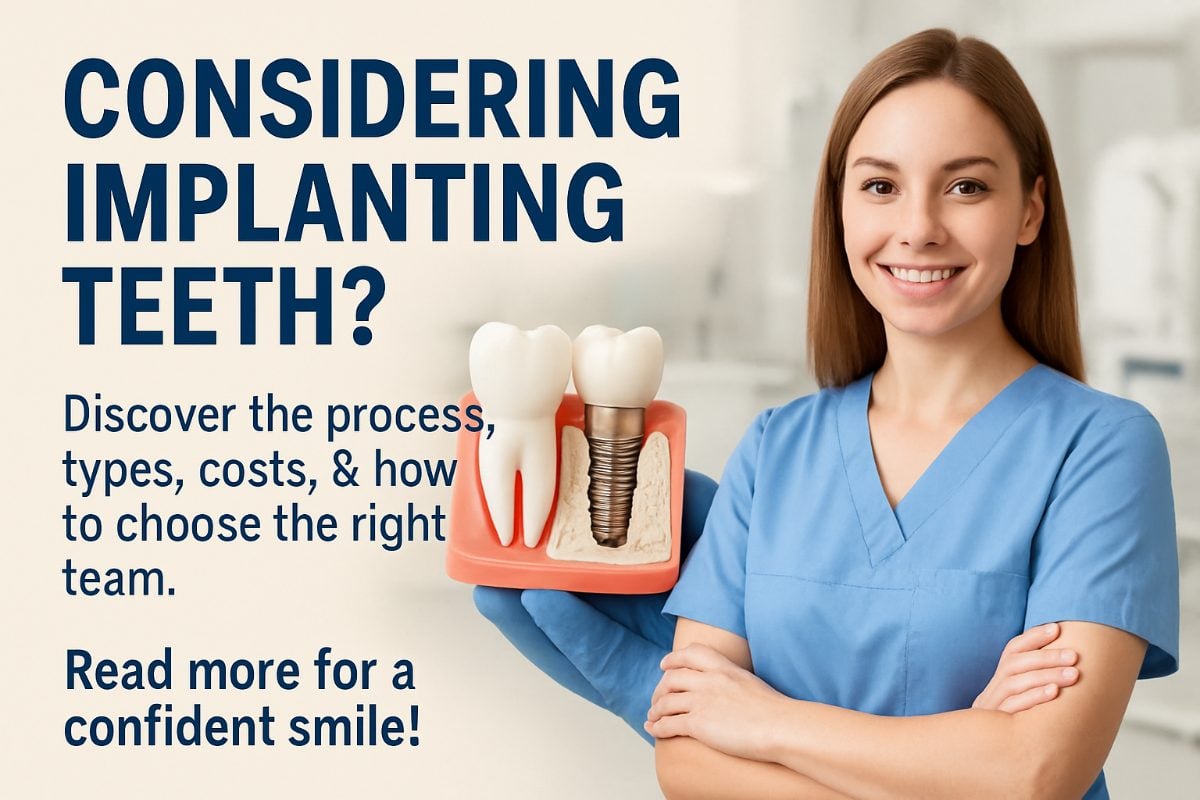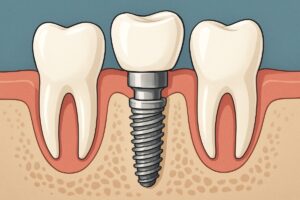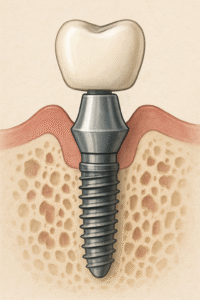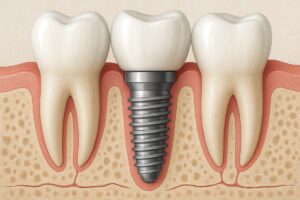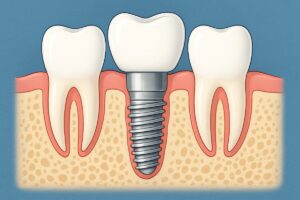Implanting teeth means placing a titanium or zirconia post into the jaw to hold a new tooth or denture. People choose implanting teeth to replace missing teeth, restore chewing and speech, and improve the look of their smile.
What are dental implants?
Dental implants have three main parts: the implant post (root), an abutment (connector), and a crown or prosthesis (the visible tooth). Unlike bridges that rely on neighboring teeth or removable dentures that sit on gums, implants fuse with bone for a stable, long-term result. Implants feel and function more like natural teeth and often protect jawbone health over time.
Who is a good candidate for implanting teeth?
Good candidates have healthy gums, enough jawbone for support (or are willing to have grafting), and overall good medical health. Non-smokers do better, though quitting before surgery improves success. Candidates should have realistic expectations and be willing to commit to care and follow-up. Implants may not be advised for people with uncontrolled diabetes, heavy smoking, certain autoimmune conditions, or poor oral hygiene — those cases may need specialist referral.
Types of implant options
Single-tooth implant
A single-tooth implant replaces one missing tooth with an implant post and a crown. This preserves adjacent teeth and gives a natural look and function.
Implant-supported bridge
An implant-supported bridge uses two or more implants to hold a bridge that replaces several missing teeth, avoiding the need for an implant for every tooth.
Full-arch options (All-on-4 / full-mouth implant prosthesis)
Full-arch solutions restore an entire upper or lower arch using a few strategically placed implants. Some cases allow immediate-load restorations, giving patients fixed teeth the same day as surgery.
Materials and restorations
Implants are most often titanium, valued for strength and bone integration. Zirconia implants are metal-free and chosen for aesthetics or metal sensitivity. Crowns and prostheses can be porcelain, zirconia, or hybrid materials — choices balance natural appearance and durability.
The implanting teeth process: step-by-step
Typical steps include a consultation with 3D CBCT imaging, digital planning, and any needed extractions or bone grafts. The implant is placed surgically, then allowed to heal and integrate with bone (osseointegration). Once stable, an abutment and final crown or prosthesis are attached. Options like IV sedation and digitally guided surgery can improve comfort and precision.
Recovery, risks, and long-term care
Healing usually takes weeks to months. Short-term side effects include swelling, minor pain, and bruising. Possible complications include infection, peri-implantitis (gum disease around implants), or implant failure. Good home care — brushing, flossing, and regular dental check-ups — plus professional cleanings help implants last decades.
Cost factors and paying for implanting teeth
Cost depends on the number of implants, need for grafting or extractions, implant materials, lab work, and sedation. Insurance often has limited coverage. Common payment paths include dental financing, payment plans, and third-party medical credit. Compare itemized estimates and ask about warranties or follow-up care.
Choosing the right team for implanting teeth
Grand Dental Implant Centers focuses on implant dentistry with CBCT imaging, in-house labs, zirconia restorations, IV sedation, and start-to-finish care. Clinicians like Dr. Cole Wells and Dr. Brandon Bice bring implant training and restorative experience. Look for a team with advanced diagnostics, clear treatment plans, and experience with both single-tooth and full-mouth solutions.
Prepare for a consultation by gathering medical and dental history, a list of goals, and questions about timeline, costs, and outcomes. Schedule a consultation to review images, options, and financing. If you’re ready, request an appointment or more information to discuss personalized implant solutions.

